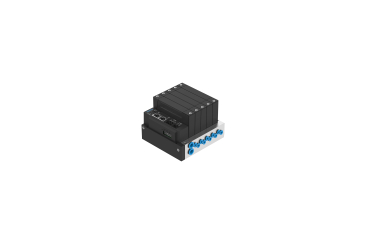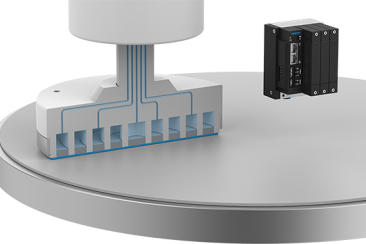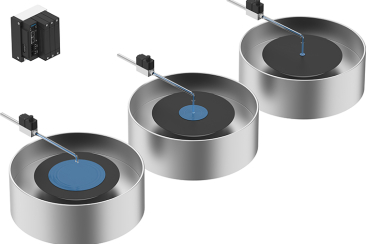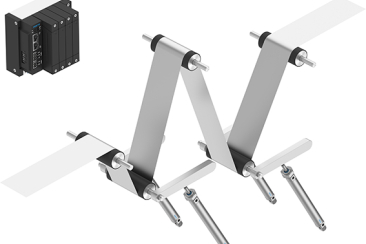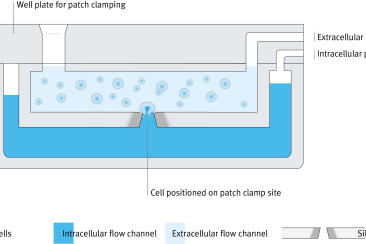
Pneumatics Makes a Technological Leap with Piezo
VTEP, the first proportional valve terminal on the market, offers high precision, fast response times, and dynamic control. This speeds up production, and at the same time ensures that manufactured products are of a higher quality. This is how Festo makes machines and systems faster and more precise, and helps the electronics and semiconductor industries, textile manufacturing, battery production and life sciences, for example, to gain decisive competitive advantages.
Pressure or vacuum? Both!
At less than 120 mm wide, VTEP is the most compact proportional valve terminal on the market for pressure control with 10 working channels. There are three versions, 2-, 3- and 5-way, which can all be easily integrated for multi-channel applications. Pressure and vacuum can be combined in the control range of 6 bar.
The directly controlled VTEP uses piezo technology, which, together with the appropriate control technology, makes the pneumatics extremely precise, fast, and economical. This offers additional benefits: the valves are quiet, free of wear, have no particle abrasion, and don't generate any heat. The valve terminal is also free of copper, nickel, and zinc, making it very suitable for battery production and other industrial segments in which these materials are disruptive.
Wafers, batteries, and more
During wafer production, the variable contact pressure of the individual polishing chambers on the polishing unit is controlled extremely precisely by the VTEP using Controlled Pneumatics. The even pressure guarantees excellent results across the entire processing surface, even when polishing delicate wafers. Valve terminals type VTEP can also be used as pilot valves for media valves. In photolithography, for example, a light-resistant layer has to be precisely applied to wafers. A VTEP-controlled suck-back function ensures that no excess paint escapes.
The proportional valve terminal VTEP is also suitable for many applications in web control, such as the production of battery foils. VTEP communicates virtually in real time, and the valves react at lightning speed. Perfect timing guarantees significantly improved process reliability in the event of unexpected forces.
Growing portfolio from Controlled Pneumatics
With Controlled Pneumatics, Festo combines proportional technology, sensors and control algorithms to create a control loop. This technology opens up completely new fields of application for pneumatics in terms of pressure, flow and movement - and also makes conventional production more efficient. Last but not least, the high-precision piezo valves reduce the consumption of compressed air by up to 50 percent, as it can be perfectly metered. This is now very simple: the closed-loop control system can be put into operation by entering just a few parameters thanks to Festo's sophisticated algorithms.
In addition to VTEP, the controlled pneumatics portfolio is constantly evolving for many applications. With the Festo Motion Terminal VTEM, movement, pressure and flow can be individually controlled and activated via motion apps. This digitalizes pneumatics, as the valve functions are controlled via apps. The proportional pressure control valve VEAB, which is often used in medical technology, for example in ventilators, is silent in operation and requires hardly any energy. The VPPI proportional pressure control valve is characterized by the fact that controller presets and pressure curves can be individually adapted.


